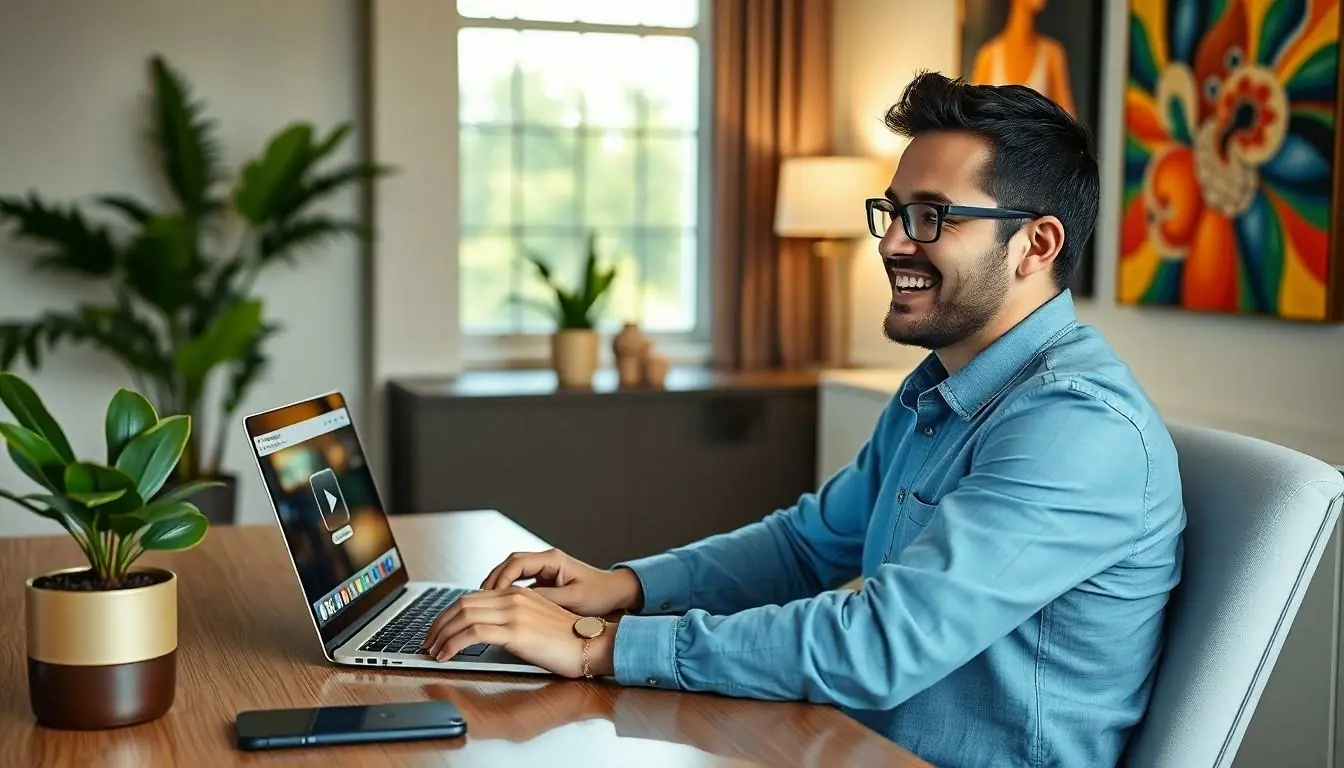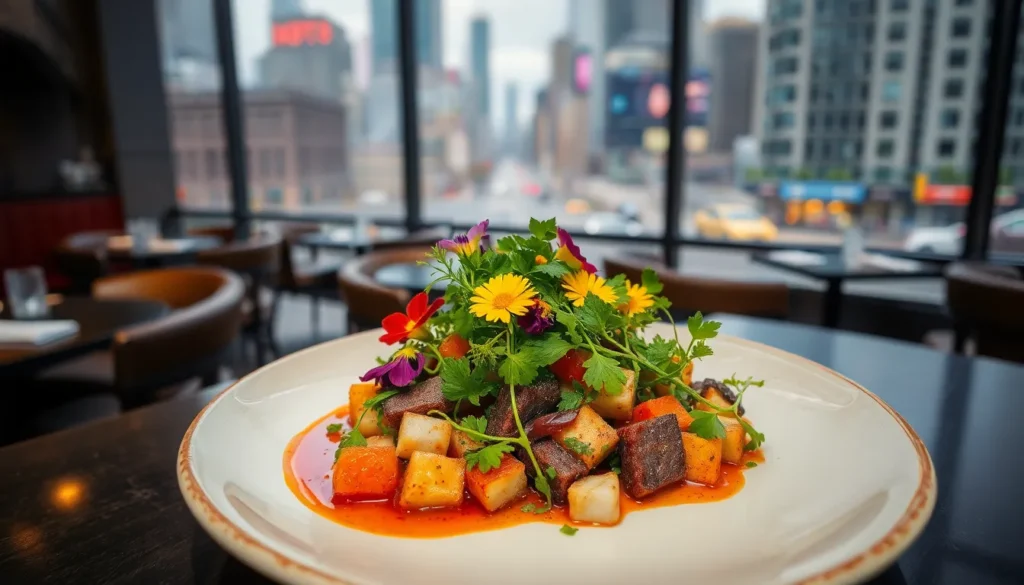Table of Contents
ToggleIn a world where text reigns supreme, wouldn’t it be great if you could spice things up with a video? Imagine sending a quick clip to ChatGPT, giving it a front-row seat to your thoughts, ideas, or even your cat’s latest antics. It’s like upgrading from a flip phone to a smartphone—why stick to the basics when you can dazzle with multimedia?
Sending a video to ChatGPT isn’t just a fun experiment; it’s a game-changer for communication. Whether you’re sharing a tutorial, a funny moment, or a heartfelt message, this guide will walk you through the process. So grab your phone, get that camera rolling, and let’s dive into the exciting world of video messaging with ChatGPT. Who knew tech could be this entertaining?
Overview Of ChatGPT Video Features
ChatGPT enhances communication with video capabilities, allowing users to send and receive video messages directly. This feature enriches interactions, making exchanges more personable and engaging. Users can express ideas visually, leveraging multimedia for clearer communication.
Numerous video formats support ChatGPT, accommodating various preferences and needs. Whether it’s short clips for quick messages or longer videos for detailed explanations, the functionality is versatile. Supported video formats include MP4, AVI, and MOV, covering most common types.
Video integration opens new avenues for creativity in conversations. Users can narrate stories, demonstrate concepts, or share memorable moments with greater impact. The visual component adds a layer of expression that text alone cannot convey.
Security remains a priority with ChatGPT’s video features. Uploaded videos undergo encryption, ensuring user privacy and data protection. This safeguard builds trust, enabling users to share content confidently.
Technical requirements for sending videos are accessible. Users should ensure a stable internet connection, as this impacts upload success. Device compatibility remains crucial, with most smartphones and computers supporting video messaging seamlessly.
Interactivity increases with video messages, fostering engagement. Recipients can respond to videos directly, creating dynamic conversations. This interaction fosters a more collaborative environment within the ChatGPT platform.
ChatGPT’s video features promise to revolutionize digital communication. Emphasizing user experience, it combines functionality with creativity. This combination sets a new standard for how users connect and share information in everyday conversations.
Methods To Send Videos To ChatGPT

Sending videos to ChatGPT enhances interactions and adds a personal touch. Different approaches exist for sending video content, making communication more dynamic.
Direct Upload Options
Users can upload videos directly within the ChatGPT interface. Supported formats include MP4, AVI, and MOV. To send a video, simply click the upload button and select the desired file from the device. The process is straightforward and designed for convenience. Sent videos undergo encryption, ensuring user security while sharing multimedia content. A stable internet connection remains essential for smooth uploading. Users appreciate this seamless integration that simplifies the sharing of thoughts and experiences.
Third-party Integration
ChatGPT accommodates third-party platforms for video sharing. Users can connect through popular applications like Google Drive or Dropbox. This method allows video files to be sent directly as links. It enables larger file transfers easily. Additionally, it maintains the integrity of video quality, benefiting the overall user experience. Sharing links provides flexibility in how recipients view video content. Integrating these platforms enhances communication without compromising security or convenience. This versatility makes video sharing even more accessible for ChatGPT users.
Best Practices For Sending Videos
Sending videos enhances interaction quality in ChatGPT. Following best practices ensures optimal communication through this feature.
Ensuring Video Quality
Users should focus on maintaining high video quality for effective communication. Clear visuals and audible sounds contribute to better understanding and engagement. A resolution of 1080p or higher is recommended for crisp images. When capturing videos, ensure good lighting in the environment, as this improves visibility. Recorded audio must be clear; using a microphone can enhance sound quality. Avoid excessive background noise that may distract from the message. Compressing videos might degrade quality; choose balance wisely between size and clarity to ensure the intended message resonates.
Choosing the Right Format
Selecting the appropriate video format plays a key role in successful uploads. ChatGPT supports several formats, including MP4, AVI, and MOV. MP4 stands out due to its widespread compatibility and efficient compression, making it ideal for most users. AVI offers flexibility in terms of editing but may result in larger file sizes. MOV is preferred for users focused on high quality and Apple-specific devices. Ensuring chosen formats align with these characteristics will simplify the upload process and maintain video integrity, enhancing user experience.
Common Issues And Troubleshooting
Encountering issues when sending videos to ChatGPT can happen. Users should first verify their internet connection. A stable connection improves upload success rates.
Another common hurdle is file format compatibility. Ensure that the video format is either MP4, AVI, or MOV. Choosing the right format prevents unnecessary errors during uploading.
Users might also face size limitations. Check if the video size exceeds the allowed upload limit. Reducing file sizes before uploading can resolve this issue.
Receiving error messages is not uncommon. These messages often indicate problems with the video file or upload process. Consult the help section of ChatGPT for guidance on specific error codes.
Device compatibility should not be overlooked. Some devices may struggle with video uploads due to software limitations. Keeping software up to date can often enhance performance.
If third-party links aren’t working, verify that the shared permissions are set correctly. Users may need to adjust settings in Google Drive or Dropbox to allow access. Ensuring that recipients can view shared links is crucial for seamless communication.
Lastly, specific video features might malfunction due to temporary glitches. Restarting the app or refreshing the browser often resolves these issues. Maintaining a clear cache can also improve application performance over time.
Addressing these common issues can enhance the experience of sending videos to ChatGPT. By troubleshooting effectively, users can focus on enriching their conversations.
Embracing video communication with ChatGPT opens up exciting possibilities for more engaging interactions. Users can enhance their conversations by sharing personal moments or creative ideas through video messages. This innovative approach not only enriches the user experience but also fosters a deeper connection.
With straightforward methods for sending videos and a focus on security and quality, anyone can easily incorporate this feature into their chats. As multimedia becomes a vital part of digital communication, leveraging video in ChatGPT is a step toward more dynamic and expressive exchanges.










